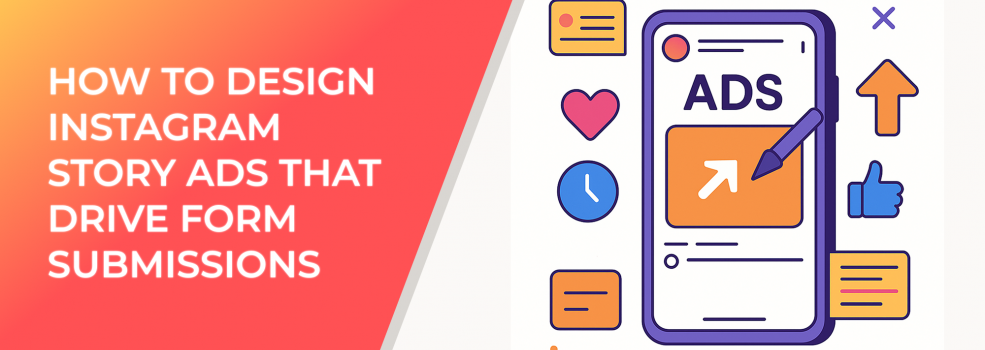Instagram Story ads have become a cornerstone in digital marketing strategies due to their immersive, full-screen format and massive reach. With over 500 million daily active users engaging with Stories, Instagram provides a powerful platform for advertisers looking to increase lead generation through form submissions.
Here’s how to create Instagram Story ads that capture attention, engage audiences, and drive conversions.
1. Start with a Strong Hook
Key insights from over 700,000 Instagram Story ads: optimal posting frequency and engagement trends
Users swipe quickly through Stories, so the first few seconds are critical. Start with eye-catching visuals or compelling copy that immediately communicates the value of your offer. Whether it’s a free trial, exclusive discount, or downloadable resource, lead with a benefit-focused message.
Tip: Use bold typography and dynamic visuals to capture attention. Use motion and animation strategically to stop the scroll.
2. Align Ad Creative with Your Target Audience
Instagram Stories versus other formats: share of influencer content and user activity breakdown
Personalization is key. Tailor your creative to your audience segments based on interests, behaviors, and demographics. Tools like LeadEnforce allow you to create custom audiences that mirror your ideal customer profile, enabling more targeted and effective campaigns.
Statistic: According to Meta, ads that are personalized see a 63% increase in conversion rates compared to generic creatives.
3. Keep It Short and Impactful
Instagram Stories are capped at 15 seconds per frame. Use this time wisely. Focus on one key message per ad and include a strong call-to-action (CTA) like “Swipe Up to Learn More” or “Tap to Sign Up.”
Pro Tip: Make the CTA visible throughout the entire ad. Don’t wait until the end.
4. Optimize for Mobile First
Design your ad vertically (9:16 aspect ratio) and ensure that all text is readable on a small screen. Use mobile-friendly fonts and high-contrast color combinations. Remember that most users will view your ad with sound off, so add captions or on-screen text to convey key points.
5. Use Lead Generation Objectives
When setting up your campaign, choose the “Lead Generation” objective in Meta Ads Manager. This enables instant forms within Instagram, reducing friction and boosting submission rates. Pre-fill fields with user information where possible to make the process faster.
Statistic: Meta reports that instant forms can increase conversion rates by up to 20% compared to linking to external landing pages.
6. Test and Iterate
A/B test different versions of your ad creatives, copy, CTA placement, and form fields. Analyze metrics like CTR, form completion rate, and cost per lead to identify what works best.
7. Retarget Engaged Viewers
Use retargeting strategies to re-engage users who viewed your Story ad but didn’t complete the form. Set up follow-up ads that offer additional value or incentives.
Statistic: Retargeting can increase conversion rates by up to 70% when used strategically.
Conclusion
Instagram Story ads can be a powerful tool for lead generation when designed with intention. By focusing on personalization, mobile optimization, and strategic CTAs, marketers can significantly increase their form submission rates.
For best results, integrate these strategies with LeadEnforce’s advanced audience targeting capabilities to ensure your ads reach the most relevant users.
Suggested Reads:
-
How to Implement Facebook’s Value-Based Lookalike Audiences for Maximum Impact
-
How to Use Hyperlocal Targeting for Small Business Ads on Facebook
-
How to Boost Engagement with Facebook Ads for Your Local Restaurant

